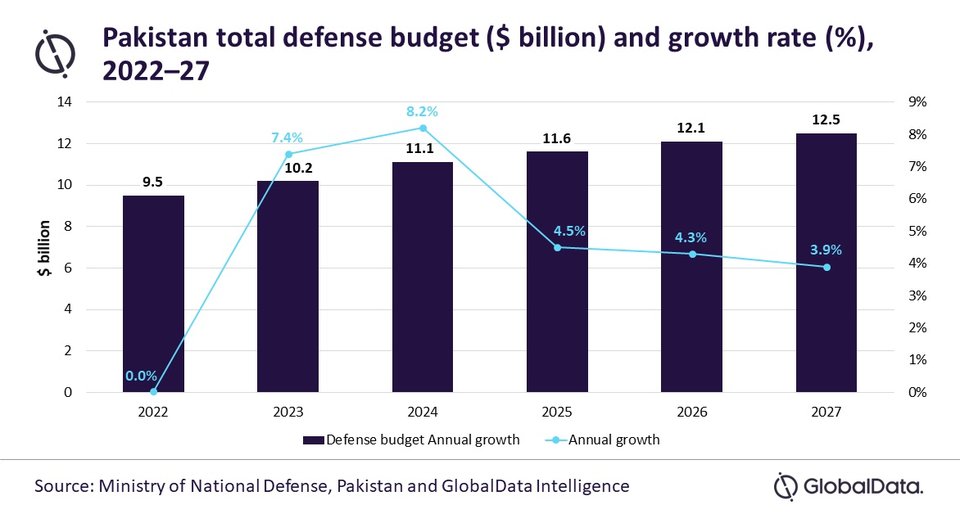PAKISTAN ACQUISITIONS
Modernisation to drive Pakistan defence expenditure to $12.5bn in 2027
Powered by
Military modernisation coupled with a desire to develop effective deterrence is set to drive Pakistan’s defence budget, according to GlobalData.
Being sandwiched between hostile neighbors, Pakistan has been bolstering its defence capabilities for the maintenance of state sovereignty and territorial integrity. Military modernisation coupled with a desire to develop effective deterrence is set to drive Pakistan’s defence budget at a compound annual growth rate (CAGR) of 5.2% from $10.2bn in 2023 to $12.5bn in 2027.
GlobalData’s latest report, “Pakistan Defense Market Size and Trends, Budget Allocation, Regulations, Key Acquisitions, Competitive Landscape and Forecast, 2022-27,” reveals that Pakistan’s defence expenditure for 2022 would amount to $9.5bn, a 4.7% increase on 2021, and reflects a CAGR of 5.2% during 2023-2027.
Rouble Sharma, aerospace and defence analyst at GlobalData, comments: “The volatile nature of the current domestic, regional, and international environments has increased the security challenges for Pakistan. Despite the spiralling debt and economic uncertainties, Pakistan has approved ambitious military modernisation programmes to procure military hardware to build its capabilities and is expected to continue doing the same during the forecast period.”

To boost Pakistan’s defence capabilities, China has delivered the latest versions of its J-10 multirole tactical fighter aircraft. Pakistan also plans to induct block III variant of the JF-17 fighter in the future.
Additionally, the ongoing programme for eight Type-041 submarines, planned for delivery in 2022–28, includes four to be produced under license in Pakistan. Many other programmes for the acquisition of artillery and military drones have been ongoing or are planned for the coming years.
Sharma continues: “Pakistan has been leaning on China to procure multiple military equipment. The J-10 will strengthen its conventional deterrence posture, by replacing some of the Pakistan Air Force’s ageing fleet of Mirage III ROSE fighters and could potentially play a role in low-level maritime strike operations. They are expected to address the asymmetries in the region, enhancing the conventional capabilities of Pakistan.”
Additionally, after a hiatus of four years, the US Biden administration has approved a $450m F-16 fighter jet fleet sustainment programme to Pakistan. The US Defense Security Cooperation Agency (DSCA) notified that the planned transaction does not involve any new capabilities, weapons, or munitions.
Sharma concludes: “The decision by the US DSCA to allow PAF F-16s to be sustained helps Pakistan deal with an ageing fleet and difficult finances that hinder outright purchases and massive modernisation programmes. If the country continues to struggle financially, compounded by environmental disasters, it will find itself in a difficult position to modernise or maintain its fleet and a deterioration of the security apparatus in the country can lead to further security concerns in the region.”